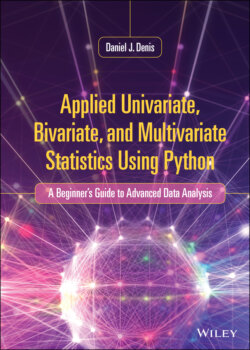Читать книгу Applied Univariate, Bivariate, and Multivariate Statistics Using Python - Daniel J. Denis - Страница 21
1.6.1 Continuity Is Not Always Clear-Cut
ОглавлениеHaving explained the distinction between continuity and discreteness at a mathematical level, at times it can be quite difficult to turn these distinctions into practice. Since, as mentioned, there are no measurably truly continuous variables in a practical sense, the question then becomes when to consider a variable as continuous or not. After all, the number of coins in my pocket can hardly be considered a continuous variable. However, for the number of coins in the entire United States, we might get away with treating the variable as continuous, even if it is not. There are so many coins that computing such things as average number of coins, a measure that assumes continuity, is not that farfetched. Even census data often reports continuous measures on otherwise discrete variables. “The average number of members per household is 3.4” the census may report. Obviously, this is nonsensical since fractions of household members cannot exist! However, since it is convenient to use an arithmetic mean to describe such things, we are implicitly treating the variable as somewhat continuous. The key take-away point is to always inquire about the data that you are computing measures of central tendency or variation on. Do not assume that because the variable is being treated as somewhat continuous in statistical computation that it is in fact continuous in its true nature. It is best to start with the premise that continuity is a theoretical entity and then see how far from that the presumably “continuous” measured research variable veers from it.
